17 Animal Pairs That Are Almost Identical but Totally Different
Have you ever called an alligator a crocodile or thought a llama was just a fancy alpaca? It happens to the best of us! Some animals look so similar that even nature-savvy folks mix them up. But no more second-guessing—this list is here to clear things up. Get ready to meet the look-alikes, the almost-twins, and the creatures that make you do a double take.
Alligator vs. Crocodile

Credit: Getty Images
Both are toothy, armored reptiles, but they’re not the same. Alligators have a U-shaped snout and are primarily found in freshwater, while crocodiles sport a V-shaped snout and thrive in saltwater. If you can see its teeth even when its mouth is closed, that’s a crocodile—they don’t tuck in like an alligator’s.
Ape vs. Monkey

Credit: pixabay/pexels
Monkeys have tails, apes don’t—it’s that simple. Monkeys tend to be smaller and more likely to scamper through trees using their tails for balance. Apes are the closest relatives to humans and are found mostly in Africa and Southeast Asia, but monkeys have a much wider range.
Jaguar vs. Leopard

Credit: Canva/Getty Images
Jaguars and leopards may seem interchangeable visually, but location, size, and those distinctive rosettes say otherwise. Jaguars, found in the Americas, are stockier, more muscular, and have shorter legs. Their rosettes usually have spots inside them, whereas leopards, which roam Africa and Asia, have solid-patterned spots.
Turtle vs. Tortoise

Credit: Getty Images
The easiest clue here is water. Turtles swim most of their lives and have webbed feet or flippers to help them glide through water. Meanwhile, tortoises are strictly land creatures with stumpy, elephant-like feet built for walking. Shell shape also gives them away—turtles have sleek, hydrodynamic shells, and tortoises carry domed, heavier shells.
Rabbit vs. Hare

Credit: Wikimedia Commons
Rabbits are the cuddly, burrowing types, while hares are the long-legged sprinters built for speed. If one darts away at full speed before you even get close, it’s probably a hare. Rabbits? They’ll likely dart into their burrows. One is a social homebody; the other is a speedy loner.
Frog vs. Toad

Credit: Wikimedia Commons/flickr
Both of these animals are amphibians, but their looks and lifestyles tell them apart. Frogs have smooth, moist skin and longer legs built for leaping. Toads have dry, bumpy skin and are more about short hops than high jumps. Frogs stick close to water, while toads are fine, venturing further onto dry land.
Moth vs. Butterfly
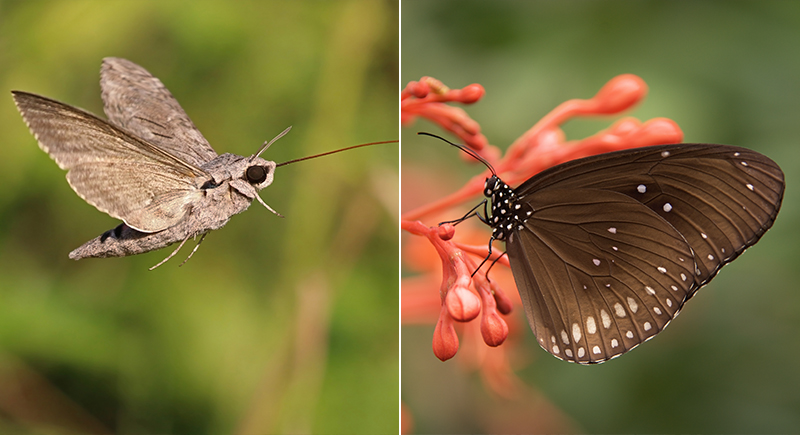
Credit: Wikimedia Commons
Butterflies are daytime fliers, and moths are night owls. If you see a fluttering visitor near a porch light at night, that’s a moth. If it’s gracefully floating through a sunny garden, it’s a butterfly. Antennae also give them away—moths have feathery, fuzzy ones, and butterflies have thin, clubbed antennae.
Octopus vs. Squid

Credit: pexels/Wikimedia Commons
They both have eight arms, but squid also have two extra tentacles. Octopuses are loners that prefer the ocean floor, but squids swim in schools in open water. Either way, both are masters of camouflage and some of the most intelligent creatures in the ocean.
Donkey vs. Mule
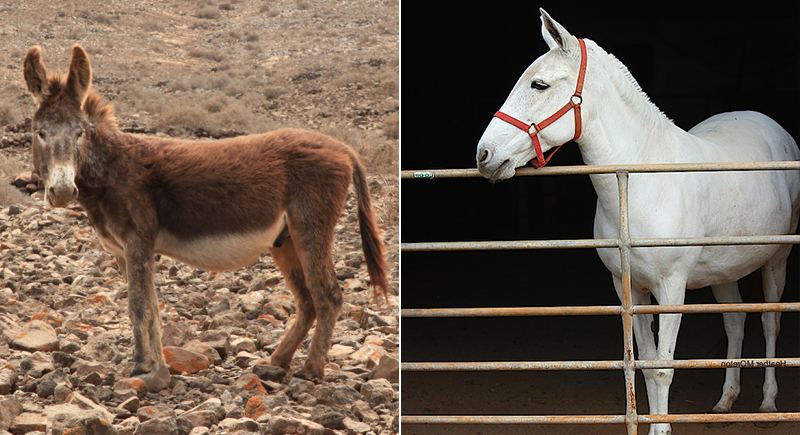
Credit: Wikimedia Commons
A donkey is the original, and a mule is the hybrid offspring of a horse and a donkey. Mules inherit strength from horses and the endurance of donkeys, which makes them sturdy workers. And though they have stockier build and big ears, donkeys are a bit stubborn. Mules are sterile due to their mixed genetics, so they can’t reproduce.
Buffalo vs. Bison

Credit: pexels/flickr
In the U.S., what most people call buffalo are bison. True buffalo, like water buffalo, are found in Africa and Asia. Bison have thick fur, a massive hump, and a beard, while buffalo are smoother and have curved horns. The American bison is an icon of the West, and no, it’s not the same animal that gave us buffalo wings.
Moose vs. Elk

Credit: flickr
Moose are the bigger, bulkier animals with a droopy nose and massive antlers. Elk are more slender, with pointier antlers and a tan body with a dark mane. If you see one towering over your car in the northern U.S. or Canada, it’s a moose. If it’s bugling in a herd out West, that’s an elk.
Coyote vs. Wolf

Credit: flickr/pexels
Coyotes are the smaller, scrappier cousins of wolves. They have pointed snouts and bushier tails and tend to be lone scavengers or small pack hunters. Wolves are bulkier, with round faces and a more powerful build. Wolves are also the pack hunters of the wilderness, whereas coyotes have adapted to urban life.
Honeybee vs. Wasp

Credit: Wikimedia Commons
Honeybees are the fluffy, friendly pollinators that we rely on for honey and flowers. Wasps are the sleek, aggressive ones that appear uninvited to every picnic. Honeybees die after stinging, while wasps can sting multiple times. Bees hover over flowers, and wasps over sandwiches!
Hedgehog vs. Porcupine
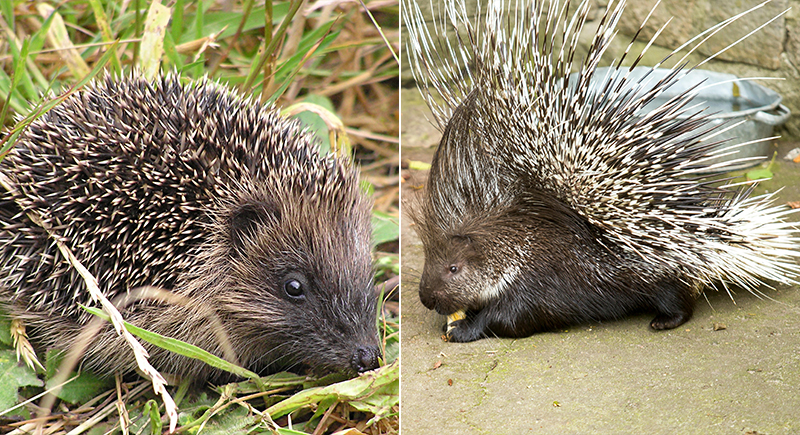
Credit: Wikimedia Commons/pexels
One fits in your hand, and the other could send you to the ER. Hedgehogs are tiny insect-eaters with short, stiff quills that stay put. Porcupines are much larger and can release their needle-like quills when threatened. A hedgehog’s quills are like bristles and won’t do much damage, but a porcupine’s barbed quills can lodge into an attacker’s skin.
Bobcat vs. Lynx
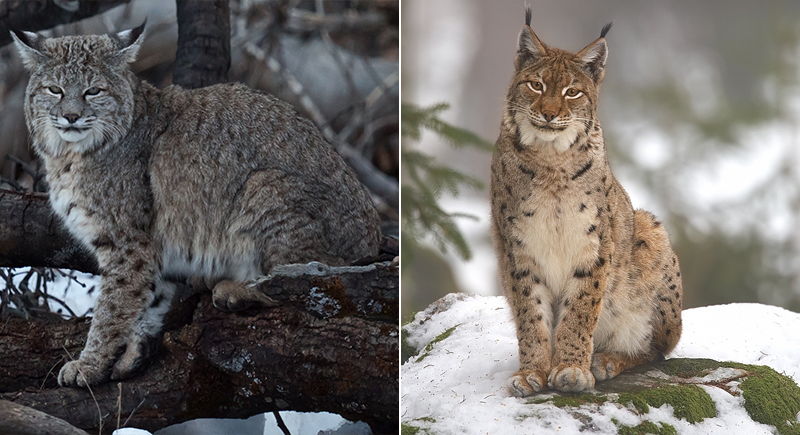
Credit: Wikimedia Commons
It’s the battle of the wild cats, and no, they aren’t the same. Bobcats are more minor, stockier, and have shorter ear tufts; Lynx are leggier with huge paws built for walking on deep snow. The biggest giveaway is the tail; a lynx’s tail has a completely black tip, whereas a bobcat’s tail has a black tip on top and is white underneath.
Seal vs. Sea Lion
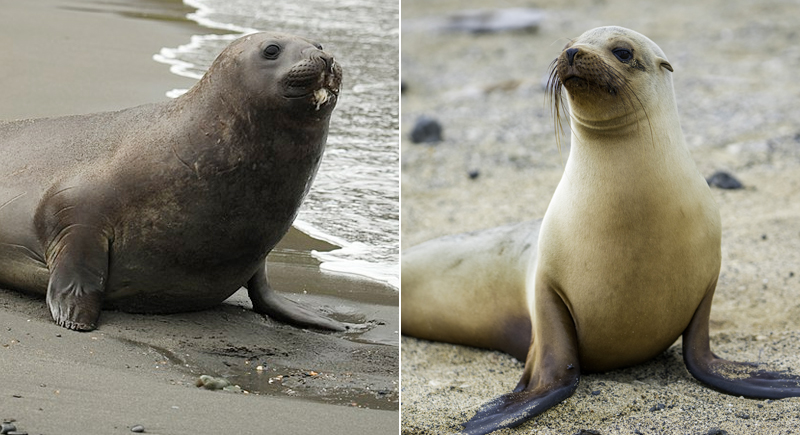
Credit: Wikimedia Commons
Seals and sea lions appear similar at first glance, but their movements give them away. Sea lions have visible ear flaps and can walk on land using large flippers. Seals lack external ears and move with an awkward belly shuffle. In water, both turn graceful fast.
Crow vs. Raven

Credit: Wikimedia Commons/pexels
Crows and ravens get mixed up constantly, but size and sound do help. Ravens are larger with thicker beaks and wedge-shaped tails in flight. Their calls sound deep and croaky. Crows are smaller, sleeker, and deliver sharp, familiar caws heard in cities and suburbs daily.